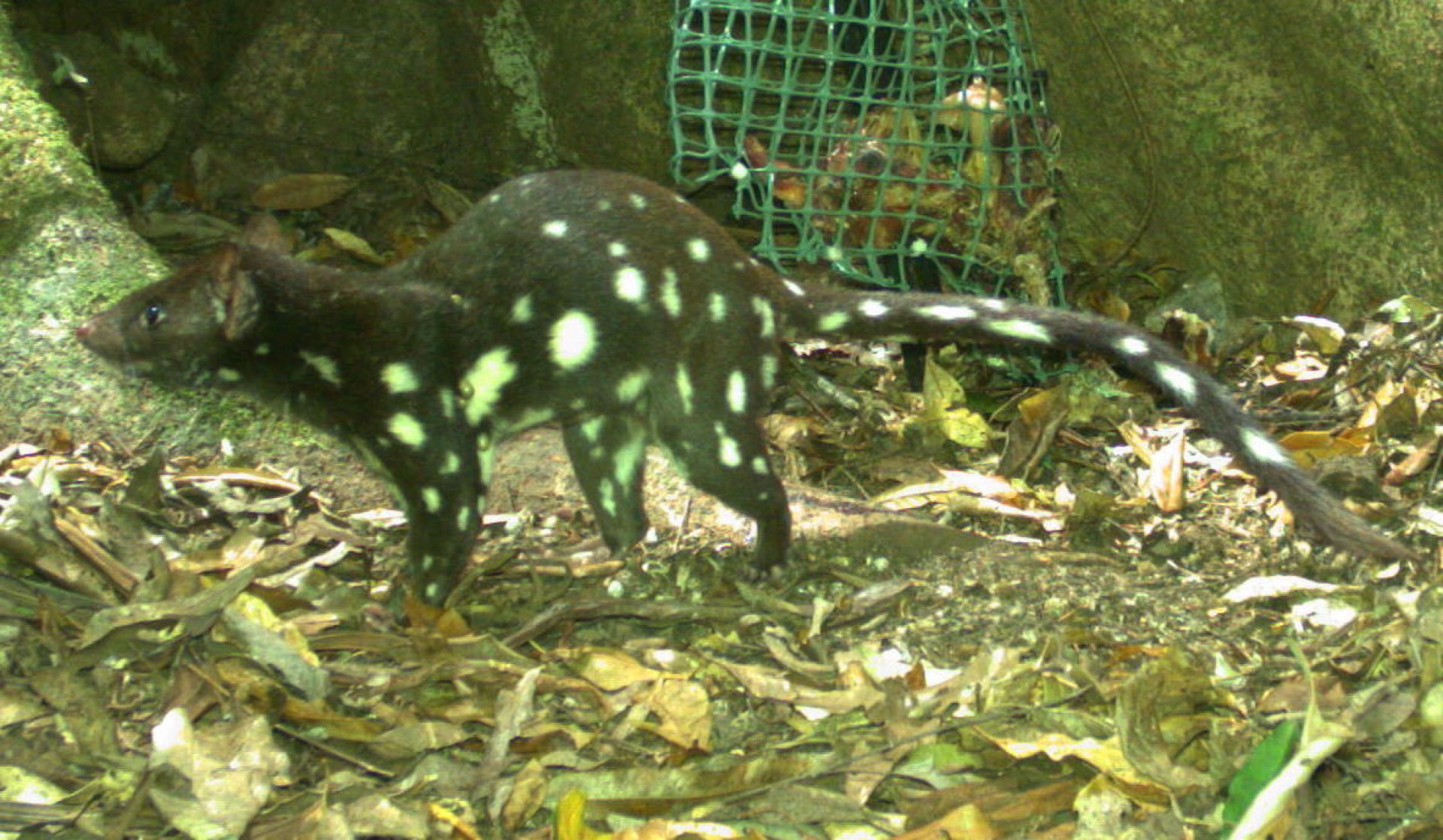Media Releases
Worrying drop in Quoll numbers

A new study has revealed a worrying decline in one of north Queensland’s most spectacular creatures, the Spotted-tailed Quoll.
James Cook University’s Dr Conrad Hoskin was lead author of the study, published in the world’s top journal for mammal research Journal of Mammalogy.
He said it shows that not only have Spotted-tailed Quolls disappeared from a large proportion of their former range in north Queensland, but the decline is continuing.
“Just six populations remain, probably totalling less than 300 individuals, and two of those populations are on their last legs,” said Dr Hoskin.
The Spotted-tailed Quoll is the largest marsupial predator left on mainland Australia. It consists of a subspecies in south-east Australia and a distinct subspecies in the Wet Tropics World Heritage Area in north-east Queensland. The study examined the distinct, and highly threatened, Wet Tropics subspecies.
“It’s a spectacular animal. It’s kind of like a spotted version of the Tasmanian Devil. It’s one of the top predators of the Wet Tropics rainforest, feeding on mammals like native rats and bandicoots on the ground, and ringtail possums up in the trees,” said Dr Hoskin.
Dr Hoskin and co-authors analysed nearly one thousand records of the species, from the 1800s to the present, to model the distribution through time.
“We worked out that the distribution of quolls has always been linked to the coldest, wettest upland areas of the Wet Tropics mountains, but the distribution is increasingly determined by human factors like habitat fragmentation and roads,” he said.
The study shows that quolls have completely disappeared from parts of their former range in the Wet Tropics, and have declined to very small parts of core areas such as the Atherton Tablelands.
“The Atherton Tablelands was once quoll heartland, but we can now only find one small population in a remote area there. Equally worrying is that the Lamb Range population, behind Cairns, appears to have recently gone extinct,” said Dr Hoskin.
The study concludes that a number of threats have driven the declines and local extinctions, including clearing and fragmentation of rainforest, hunting, and the animals being hit by cars. Additionally, introduced species are likely a threat, including poisoning from cane toads and competition with feral cats.
“We know that significant threats are still impacting populations, even within seemingly well-protected national parks,” said Dr Hoskin.
He said an issue for quolls is that they travel vast distances, particularly males in the breeding season, so they will often stray outside protected areas.
“Large wilderness areas without roads are essential for preserving quolls. There are now only a few wild areas large enough for these enigmatic predators to roam without encountering human threats.”
Photos are available from JCU media here.
Please credit as marked.
Dr Conrad Hoskin
E: conrad.hoskin@jcu.edu.au